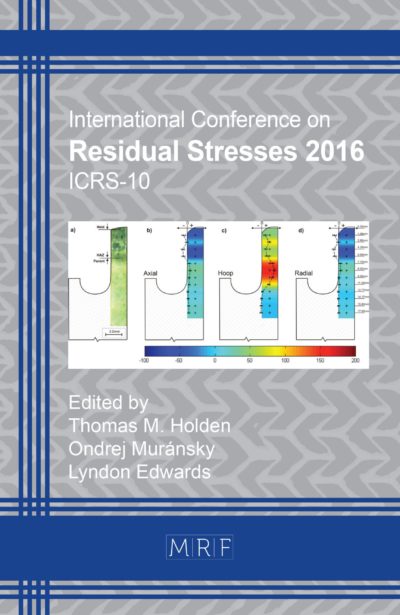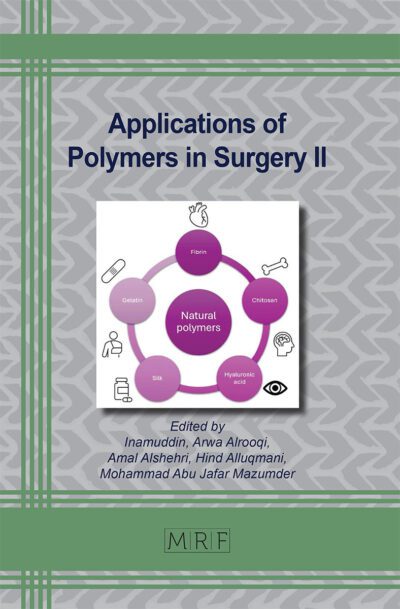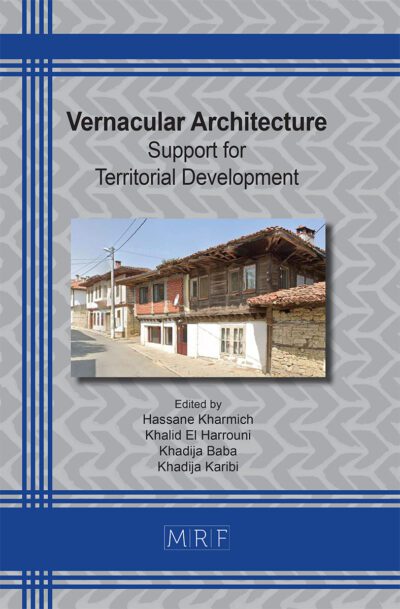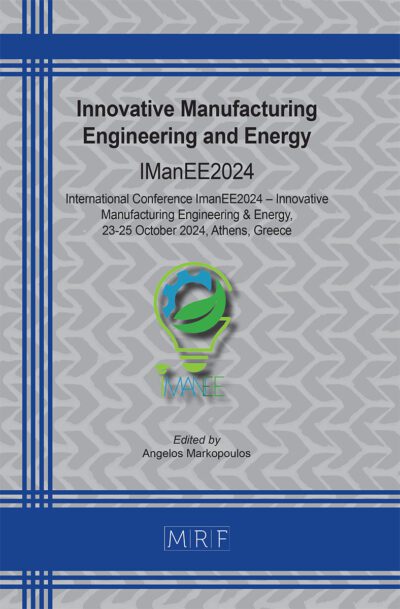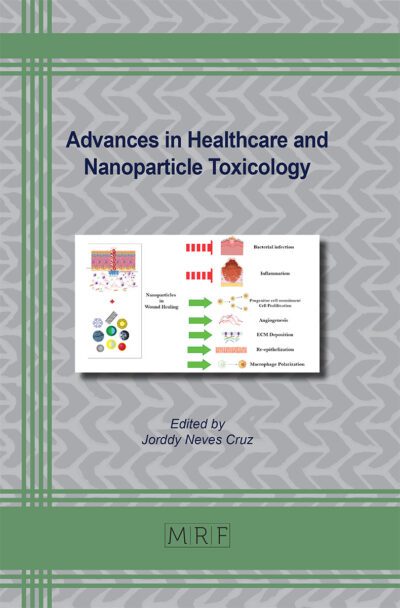–
Residual formability analysis of bent and remanufactured thin steel sheets
FARIOLI Daniele, KAYA Ertuğrul, STRANO Matteo
download PDFAbstract. This study examines the plastic deformation and remaining formability of DC04 mild steel, a material frequently used in automotive applications, after undergoing V-bending and subsequent cold or warm flattening processes. The research aims to determine if previously bent sheets maintain sufficient ductility for an additional forming cycle, a key factor in advancing circular economy practices. Samples were cold-formed into V-bends of various angles and then reshaped through flattening, with critical process parameters controlled. Tensile tests were performed on both the original sheets and reshaped samples to study the impact of the bending index, dwell force, dwell time, and flattening temperature on mechanical properties. Geometric characterization of the samples before and after flattening showed localized permanent deformation and an “M” profile near the bend line, leading to a spring-forward effect and a “U” shape of the samples. Analysis of tensile stress-strain curves and regression models indicated a decrease in elongation at maximum stress with an increasing bending index, while the ultimate tensile strength remained relatively constant. Yield stress showed a minor increase with a higher bending index and flattening temperature. These results underscore the potential for reusing end-of-life vehicle sheets, providing a more sustainable alternative to conventional recycling methods.
Keywords
Residual Formability, Automotive Steel, Remanufacturing, V-Bending, Flattening
Published online 4/24/2024, 12 pages
Copyright © 2024 by the author(s)
Published under license by Materials Research Forum LLC., Millersville PA, USA
Citation: FARIOLI Daniele, KAYA Ertuğrul, STRANO Matteo, Residual formability analysis of bent and remanufactured thin steel sheets, Materials Research Proceedings, Vol. 41, pp 1123-1134, 2024
DOI: https://doi.org/10.21741/9781644903131-124
The article was published as article 124 of the book Material Forming
![]() Content from this work may be used under the terms of the Creative Commons Attribution 3.0 license. Any further distribution of this work must maintain attribution to the author(s) and the title of the work, journal citation and DOI.
Content from this work may be used under the terms of the Creative Commons Attribution 3.0 license. Any further distribution of this work must maintain attribution to the author(s) and the title of the work, journal citation and DOI.
References
[1] J. Pavan Kumar, R. Uday Kumar, B. Ramakrishna, B. Ramu, and K. Baba Saheb, “Formability of sheet metals – A review,” IOP Conf. Ser. Mater. Sci. Eng., vol. 455, no. 1, 2018. https://doi.org/10.1088/1757-899X/455/1/012081
[2] N. R. Small, D. K. Williams, R. Roy, and S. K. Hazra, “Accounting for the effect of heterogeneous plastic deformation on the formability of aluminium and steel sheets,” Int. J. Adv. Manuf. Technol., vol. 109, no. 1–2, pp. 397–410, 2020. https://doi.org/10.1007/s00170-020-05372-0
[3] S. Dhara, S. Basak, S. K. Panda, S. Hazra, B. Shollock, and R. Dashwood, “Formability analysis of pre-strained AA5754-O sheet metal using Yld96 plasticity theory: Role of amount and direction of uni-axial pre-strain,” J. Manuf. Process., vol. 24, pp. 270–282, 2016. https://doi.org/10.1016/j.jmapro.2016.09.014
[4] H. L. Yi, L. Sun, and X. C. Xiong, “Challenges in the formability of the next generation of automotive steel sheets,” Mater. Sci. Technol. (United Kingdom), vol. 34, no. 9, pp. 1112–1117, 2018. https://doi.org/10.1080/02670836.2018.1424383
[5] M. Feistle, A. Kindsmüller, I. Pätzold, R. Golle, and W. Volk, “Influence of Sheet Metal Pre-forming on Edge Crack Sensitivity using an AHSS Steel Grade,” Int. J. Mater. Form., vol. 15, no. 4, pp. 1–11, 2022. https://doi.org/10.1007/s12289-022-01669-5
[6] D. Lumelskyj, J. Rojek, D. Banabic, and L. Lazarescu, “Detection of Strain Localization in Nakazima Formability Test – Experimental Research and Numerical Simulation,” Procedia Eng., vol. 183, pp. 89–94, 2017. https://doi.org/10.1016/j.proeng.2017.04.016
[7] D. Banabic, F. Barlat, O. Cazacu, and T. Kuwabara, “Advances in anisotropy of plastic behaviour and formability of sheet metals,” Int. J. Mater. Form., vol. 13, no. 5, pp. 749–787, 2020. https://doi.org/10.1007/s12289-020-01580-x
[8] J. He, Z. C. Xia, X. Zhu, D. Zeng, and S. Li, “Sheet metal forming limits under stretch-bending with anisotropic hardening,” Int. J. Mech. Sci., vol. 75, pp. 244–256, 2013. https://doi.org/10.1016/j.ijmecsci.2013.07.007
[9] T. Clausmeyer, M. Noman, and B. Svendsen, “Formulation and application of models for anisotropic hardening in sheet metals subject to complex loading‐path changes,” Pamm, vol. 9, no. 1, pp. 329–330, 2009. https://doi.org/10.1002/pamm.200910138
[10] J. M. Allwood and J. M. Cullen, Sustainable Materials: With Both Eyes Open. 2012.
[11] D. Farioli, M. Fabrizio, E. Kaya, M. Strano, and V. Mussi, “Reshaping of thin steel parts by cold and warm flattening,” Int. J. Mater. Form., vol. 16, no. 4, 2023. https://doi.org/10.1007/s12289-023-01759-y
[12] D. Farioli, M. Fabrizio, E. Kaya, V. Mussi, and M. Strano, “Energy measurements and LCA of remanufactured automotive steel sheets,” in ESAFORM, 2023, pp. 1947–1956. doi: 10.21741/9781644902479-210
[13] J. Falsafi, E. Demirci, and V. V. Silberschmidt, “Computational assessment of residual formability in sheet metal forming processes for sustainable recycling,” Int. J. Mech. Sci., vol. 119, no. October, pp. 187–196, 2016. https://doi.org/10.1016/j.ijmecsci.2016.10.013
[14] H. Takano, K. Kitazawa, and T. Goto, “Incremental forming of nonuniform sheet metal: Possibility of cold recycling process of sheet metal waste,” Int. J. Mach. Tools Manuf., vol. 48, no. 3–4, pp. 477–482, 2008. https://doi.org/10.1016/j.ijmachtools.2007.10.009
[15] Tekkaya, Franzen, and Trompeter, “Wiederverwertungsstrategien für Blechformteile,” SFU. pp. 187–196, 2008.
[16] R. Bagheriasl, K. Ghavam, and M. J. Worswick, “Formability improvement with independent die and punch temperature control,” Int. J. Mater. Form., vol. 7, no. 2, pp. 139–154, 2014. https://doi.org/10.1007/s12289-012-1115-6
[17] Z. Wang et al., “Warm Deformation and Dynamic Strain Aging of a Nb-Cr Microalloyed Low-Carbon Steel,” Metall. Mater. Trans. A Phys. Metall. Mater. Sci., vol. 51, no. 9, pp. 4623–4631, 2020. https://doi.org/10.1007/s11661-020-05855-5


